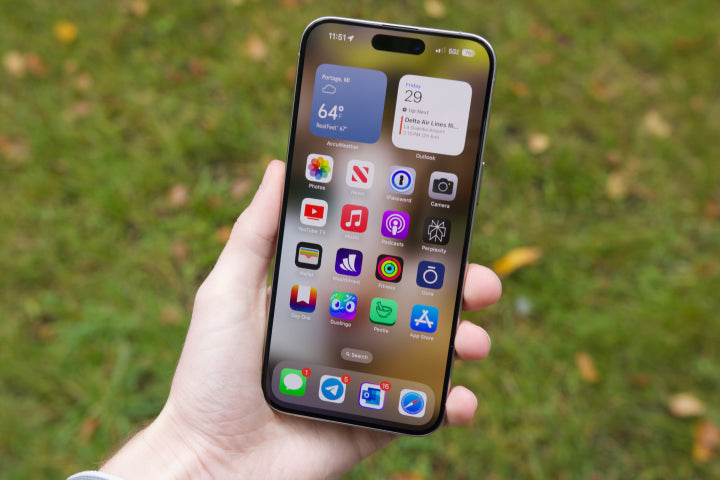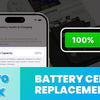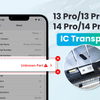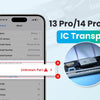The Dos and Don'ts of Applying a Screen Protector on a Cracked Screen

Using a screen protector on a cracked screen has a lot of benefits. This keeps shards in place, preventing further damage. While it's not permanent, it protects against dirt and impacts. As a result of this inexpensive measure, the screen can be stabilized, making it safer until professional repairs can be made.
Benefits of Applying a Screen Protector
A screen protector shields the device from further damage. It holds broken glass pieces in place, reducing injury risks. Additionally, it helps prevent dust and dirt from entering cracks. This prevents internal damage and maintains screen functionality. By adding a layer of protection, it also prolongs the lifespan of the device.
Risks of Not Applying a Screen Protector
Increased exposure to dust and dirt can cause more internal damage. Without a screen protector, the cracked screen is vulnerable to further shattering. The device's functionality might worsen over time. Sharp edges of the crack pose a risk of injury. Additionally, the resale value of the device decreases significantly without added protection.
Right Screen Protector for a Cracked Screen
Choosing the appropriate screen protector is vital. Ensure the protector matches the device's size and shape for optimal coverage. Various types are available, including tempered glass or plastic film. Consider a durable and high-quality option to maximize protection. The right choice will extend the life of the cracked screen and enhance its usability.
Compatibility and Size Considerations
Choosing the right screen protector requires attention to size and shape. It's essential to match the device's dimensions precisely. A protector that is too small won't cover the entire screen, exposing the edges. Conversely, one that's too large may not adhere correctly. Ensuring compatibility guarantees optimal protection for the cracked screen, maintaining functionality.
Types of Screen Protectors Available
There are several types of screen protectors to consider: tempered glass, plastic film, liquid protectors, and privacy screens. Tempered glass offers the best protection and clarity. Plastic films are budget-friendly but less durable. Liquid protectors provide a seamless feel but with limited impact resistance. Privacy screens prevent onlookers from viewing the device.
Preparation for Applying a Screen Protector on a Cracked Screen
Before starting, ensure your hands and work area are clean. Begin by thoroughly cleaning the cracked screen to remove dust and debris. Use a microfiber cloth to wipe the surface gently, ensuring no small particles remain. For stubborn spots, use a mild screen cleaner. Proper preparation prevents further damage and ensures optimal adhesion of the screen protector.
Cleaning the Cracked Screen
Before starting, ensure your hands and work area are clean. Begin by thoroughly cleaning the cracked screen to remove dust and debris. Use a microfiber cloth to wipe the surface gently, making sure no small particles remain. For stubborn spots, use a mild screen cleaner. Proper preparation prevents further damage and ensures optimal adhesion of the screen protector.
Removing Air Bubbles
To eliminate air bubbles from the screen protector, use a squeezing tool or microfiber cloth to push bubbles toward the edges gently. For stubborn bubbles trapped by dust particles, employ dust removal tape to lift the protector slightly and clear the debris. Reapply the protector carefully to ensure a smooth surface.
Common Mistakes to Avoid When Applying a Screen Protector on a Cracked Screen
Many individuals exert excessive force while installing a screen protector, which can worsen the crack. It's vital to remove all protective films correctly to avoid bubbles and misalignment. Neglecting to clean the cracked screen thoroughly can trap dust, diminishing the protector's effectiveness. Finally, not allowing adequate drying time can lead to adhesion issues.
Using Excessive Force While Installing
Applying excessive force during installation can worsen the crack. Gentle handling is crucial to prevent additional damage. Over-pressing may also cause the screen protector to misalign, reducing its effectiveness. Properly align and gently press down the protector to ensure it adheres without damaging the screen further. Patience and careful application yield better results.
Failure to Remove Protective Films Properly
Failure to remove protective films properly can lead to issues. Residual film bits can cause gaps where dust accumulates. This reduces the screen protector's efficiency and increases the risk of further damage. Additionally, air bubbles may form, compromising touch sensitivity. Ensuring complete removal of protective films is essential for optimal screen protector performance.
Conclusion
In conclusion, applying a screen protector to a cracked screen requires meticulous attention to detail and patience. Proper cleaning, gentle handling, and thorough removal of protective films are vital steps to ensure the screen protector adheres effectively and provides optimal protection. By avoiding common mistakes and following these guidelines, you can extend the life of your device and maintain its functionality.
-
Posted in
cracked screen, screen protector




